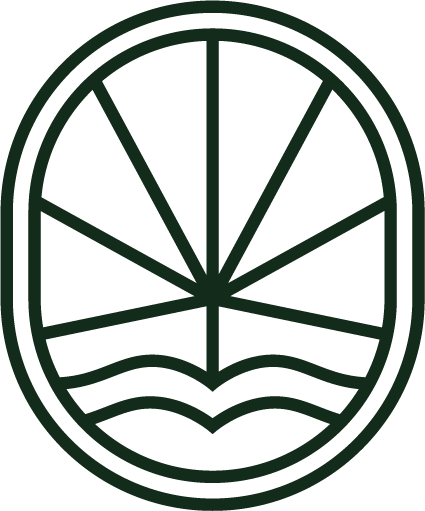The therapeutic potential of cannabinoid derivatives is widely explored in the treatment of chronic pain and neurodegenerative diseasesHowever, the studies of Cannabis in the dermatological practice are still incipient, but indicate the attributes of the plant as an anti-inflammatory component associated with skin fibrosis, à wound healingand fight against acneamong other conditions, such as psoriasis and atopic dermatitis.
This can be explained due to the abundant presence of endocannabinoid substances and receptors in the integumentary system. In this content, we will discuss what we already know scientifically about the use of Cannabis in Dermatology and how you can improve your prescriptive practice in this context. Read on and learn about the main scientific evidence and clinical applications!
Evidence and applications of Cannabis in Dermatology
Many scientific studies show anti-inflammatory, antioxidant and even antineoplastic properties of cannabinoid derivatives in skin pathologies. One example is this experiment, which shows that the activation of CB1 and CB2 receptors by cannabidiol (CBD) resulted in the inhibition of melanoma growth, proliferation and metastasis in mouse specimens.
>> Check out the full experiment here: Effects of cannabidiol (CBD) on the inhibition of melanoma cells in vitro, de Rosemary Burch, Asif Mortuza, Elliott Blumenthal, Ahmed Mustafa.
The antitumor potential of cannabinoids is also discussed in this bibliographic reviewmore specifically, in relation to the inflammatory component of skin cancerThis review considered in vitro and in vivo studies that employed phytocannabinoids or synthetic cannabinoids, pointing these substances as eligible for topical use in the treatment of inflammatory skin diseases.
The review also evaluated studies directly related to integumentary fibrosis and wound healing processes. The results showed that the inactivation of CB1 receptor and the activation of CB2 receptor generated antifibrotic effects in cellular experimental models and in animal models of skin fibrosis. Moreover, the activation of the CB2 receptor was also able to promote tegumental tissue re-epithelialization.
>> You can read the full review here: Cannabinoids in the Pathophysiology of Skin Inflammation.
There are other in vitro and animal studies that provide information on the possible mechanisms of modulation of the Endocannabinoid System in fighting skin inflammation. We highlight this research which shows that the CBD, is able to inhibit inflammation mediators involved in wound healing and dermatological inflammatory processes.
>> You can read the full study here: Cannabis sativa L. extract and cannabidiol inhibit in vitro mediators of skin inflammation and wound injury.
Many studies also suggest the therapeutic potential of Cannabis to fight pruritus, such as this bibliographic review that correlates the use of cannabinoids to the reduction of pruritus in several dermatological diseases, namely atopic dermatitis, psoriasis, asteatotic eczema and allergic contact dermatitis.
>> You can read the full review here: Cannabinoids for the treatment of chronic pruritus: A review.
Also, there is already evidence for the use of cannabinoids to treat acne. This comparative study investigated the efficacy and safety of Cannabis seed extract cream in combating sebum and skin erythema in the malar region of humans. Volunteers were instructed to apply the Cannabis extract along with conventional medication to one cheek for 12 weeks. On the other side, they used only the conventional medication.
The results showed that sebum and skin erythema decreased significantly on the side where the Cannabis seed extract was used, compared to the side treated with conventional medication alone. In addition, there were no adverse events related to the use of Cannabis extract, especially skin irritation, suggesting a satisfactory safety profile for the product.
>> You can check out the full experiment here: The safety and efficacy of 3% Cannabis seeds extract cream for reduction of human cheek skin sebum and erythema content.
Cannabis Prescribing Practices in Dermatology
A North American research carried out on 145 dermatologists evaluated the prescriptive practices of Cannabis in dermatology
by using a 24-question questionnaire. Of the total respondents:
- 91% support the medical use of Cannabis and
- 13,8% recommend it for a dermatological condition, the most frequent applications being for:
- atopic dermatitis (45%) and
- psoriasis (40%).
The most common route of administration was topical (75%)Regarding the reasons for not recommending the use of medical Cannabis, the following were pointed out as limiting factors:
- the limited knowledge (56%) and
- the lack of prescriptive experience (48%).
This is another indication that medical qualified education in the field is essential to ensure appropriate technical knowledge and to incorporate this broad therapeutic arsenal in a safe and assertive manner.
Although the small sample size does not allow us to generalize the results, the relationship between medical Cannabis and Dermatology remains promising, especially with regard to inflammatory skin-pruritic conditions, such as psoriasis and atopic dermatitis.
Would you like to learn more about Cannabis and Dermatology? See also other existing scientific evidence on the role of cannabinoid derivatives in skin cancer!
References
Ali A, Akhtar N. The safety and efficacy of 3% Cannabis seeds extract cream for reduction of human cheek skin sebum and erythema content. Pak J Pharm Sci. 2015.
Avila C, Massick S, Kaffenberger BH, Kwatra SG, Bechtel M. Cannabinoids for the treatment of chronic pruritus: A review. J Am Acad Dermatol. 2020.
Sangiovanni E, Fumagalli M, Pacchetti B, Piazza S, Magnavacca A, Khalilpour S, Melzi G, Martinelli G, Dell’Agli M. Cannabis sativa L. extract and cannabidiol inhibit in vitro mediators of skin inflammation and wound injury. Phytother Res. 2019
Scheau C, Badarau IA, Mihai LG, Scheau AE, Costache DO, Constantin C, Calina D, Caruntu C, Costache RS, Caruntu A. Cannabinoids in the Pathophysiology of Skin Inflammation. Molecules. 2020.
Yeroushalmi S, Nelson K, Sparks A, Friedman A. Perceptions and recommendation behaviors of dermatologists for medical cannabis: A pilot survey. Complement Ther Med. 2020.




